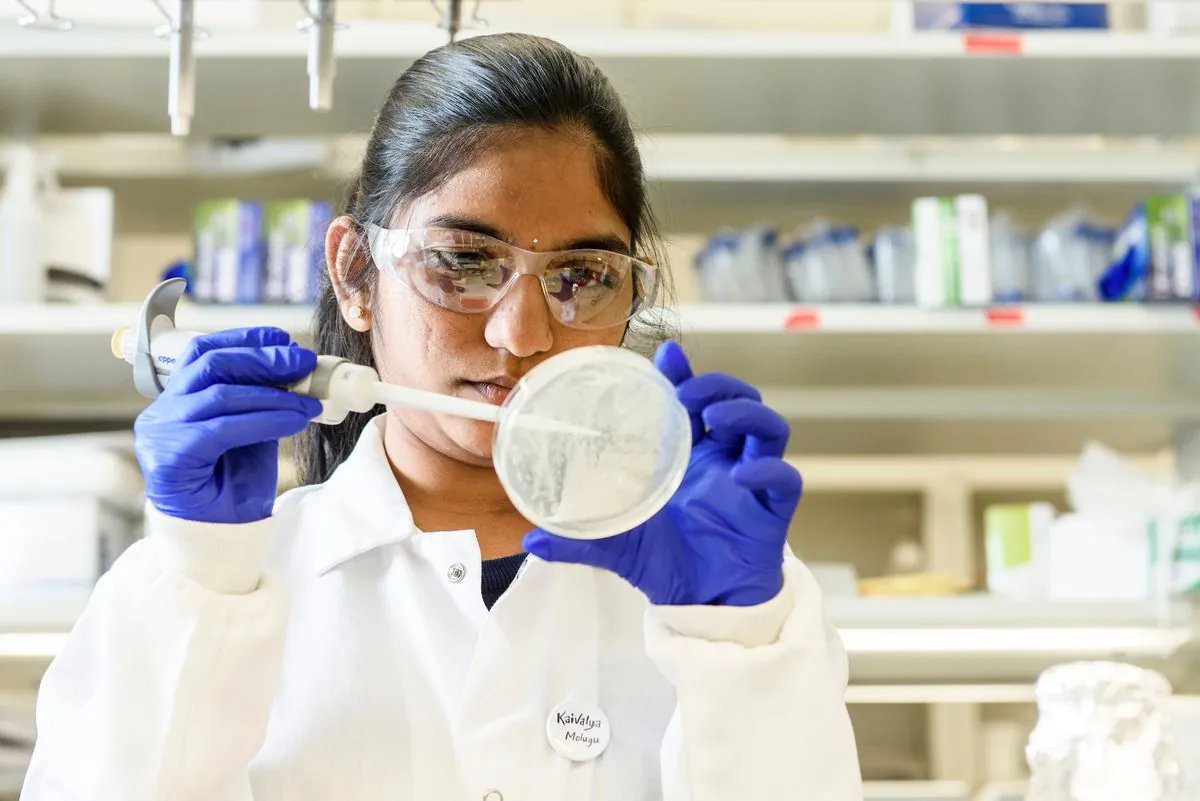Lab-Grown Blood Stem Cells: A Game-Changer for Leukaemia Treatment
Scientists successfully grow blood stem cells in lab, potentially eliminating need for bone marrow donors. Breakthrough could revolutionize treatment for blood diseases, with human trials planned within five years.

In a groundbreaking development, scientists at the Murdoch Children's Research Institute (MCRI) in Melbourne, Australia, have successfully grown blood stem cells in a laboratory setting. This achievement marks a significant milestone in the field of stem cell research, potentially revolutionizing the treatment of blood disorders such as leukaemia.
Dr. Elizabeth Ng, associate professor at MCRI and lead researcher, explains the process: "We would take mature cells from a patient – so skin or hair – and reprogramme them and grow pluripotent stem cells in a dish. We would then be able to differentiate those, and grow blood stem cells, and these blood stem cells would then become the therapy that we give back to the patient."
This innovative approach could address several challenges associated with current bone marrow transplant procedures. Presently, patients with conditions like leukaemia, bone marrow failure, or aplastic anaemia rely on donated bone marrow or stem cells to replenish their blood. However, finding an exact match can be difficult, and mismatched donor immune cells can lead to severe complications or even death.

The ability to generate patient-specific blood stem cells offers numerous advantages:
- Elimination of donor shortages
- Perfect genetic matching, reducing rejection risks
- Potential for genetic defect correction
- Possibility of creating an unlimited supply of blood stem cells
Prof Andrew Elefanty from MCRI highlights the potential impact: "This will help treat a range of conditions and over time we will get an idea just how large a proportion of patients requiring blood transplants would benefit from our approach."
The research team has already demonstrated the effectiveness of these lab-grown stem cells in animal trials. When injected into immune-deficient mice, the engineered human blood stem cells successfully developed into functioning bone marrow, producing blood at levels comparable to umbilical cord blood cell transplants.
"This new research, which could lead to personalised treatments for childhood leukaemia, marks a promising breakthrough for treating this disease. It has the potential to reduce the risks which currently exist around stem cell transplants, such as cell rejection which is a serious complication in current leukaemia treatments, and could give families much-needed hope of successful transplants."
The team aims to initiate human trials within the next five years, potentially by 2029. This timeline aligns with the rapid advancements in stem cell research since the discovery of hematopoietic stem cells in 1961 by James Till and Ernest McCulloch.
As the global stem cell therapy market is projected to reach $28 billion by 2027, this breakthrough could significantly impact the treatment landscape for blood disorders. With approximately 10,000 people diagnosed with leukaemia annually in the UK alone, the potential benefits of this research are substantial.
The success of this study builds upon decades of progress in stem cell research. From the first successful bone marrow transplant in 1968 to the creation of induced pluripotent stem cells (iPSCs) in 2006, each milestone has contributed to improving patient outcomes. Today, stem cell research has led to treatments for over 80 diseases and conditions, with success rates for bone marrow transplants improving from 20% in the 1970s to over 70% in recent years.
As the scientific community eagerly awaits the results of future clinical trials, this breakthrough offers hope for a future where personalized, patient-specific blood stem cell treatments become a reality, potentially transforming the lives of those affected by blood disorders.


































